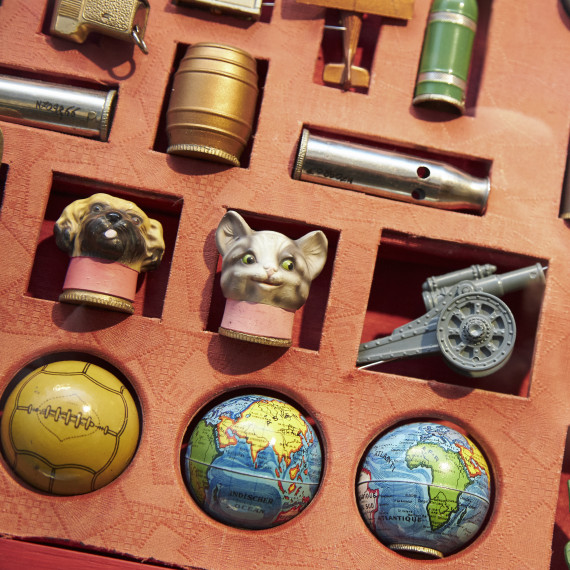The T. P. Möbius pencil sharpener factory

Since the 1920s, Erlangen had been a global centre of pencil sharpener manufacture. The emergence of the industry starts with Theodor Paul Möbius, a tinkerer and hobbyist who had already promoted innovations when he worked as a master craftsman at Erlangen's brush factory. More as a side interest, he also came up with the idea of inventing a pencil sharpening device.
His first models simply consisted of a conically shaped and sharpened piece of sheet metal. He later improved the device by attaching a dedicated blade to a separate sharpener housing. The invention itself was not entirely novel – ideas for similar designs had been around since the 19th century – but its intentional adaptation to industrial production processes was.
In 1908, Möbius set up on his own and began production in a cramped workshop. After the First World War, the company developed into a large enterprise that sold its products in many European countries, and later worldwide.
At the beginning of the 1920s, other companies that still exist today emerged in the region: the A Klebes & Co. KUM-Pencil Sharpener Factory in 1920, the Metallwarenfabrik ('metal goods factory') Christian Eisen & Son in Baiersdorf in 1921, und the Möbius and Ruppert company in 1922. The Phantasiespitzer (‘fantasy sharpener’) first introduced to the market by the Klebes company quickly became widespread. With an export component of ca. 80%, pencil sharpener manufacture in Erlangen soon took up a leading position on world markets.
Since the 1970s, the pencil sharpener factories have been subject to pressure from Asian competition. In 1983, the T. Paul Möbius company had to be wound up because of solvency issues. The Dux GmbH company, founded to act as its receiver, today manufactures at reduced volumes in Zeckern near Hemhofen.
How pencil sharpeners are made
Today, the classic metal sharpener is usually made from a magnesium alloy or, at the top of the range, from brass. The raw material arrives in the form of lenghts of metal profiles, which are then cut into sharpener-sized pieces. Into the blank are then milled the conical hole, the recess for the blade, and the groove for the shavings. A thread is also cut into the recess for the blade to hold its fixing screw in place.
At the heart of the sharpener, however, is its blade. It must be milled to an accuracy of one hundredth of a millimetre for the wood shavings to be lifted off precisely when sharpening the pencil. The blades are punched from strips of steel, hardened, brushed, sorted, ground, and honed. Some details of blade manufacture used to be considered trade secrets. Finally, the sharpeners are assembled, checked, cleaned, and coated with a protective varnish.
Mass production led to strong division of labour, and enabled custom machinery to be developed in-house.
Today, automated machines are recombining previously separated production steps.
< Previous chapter | Next chapter >
